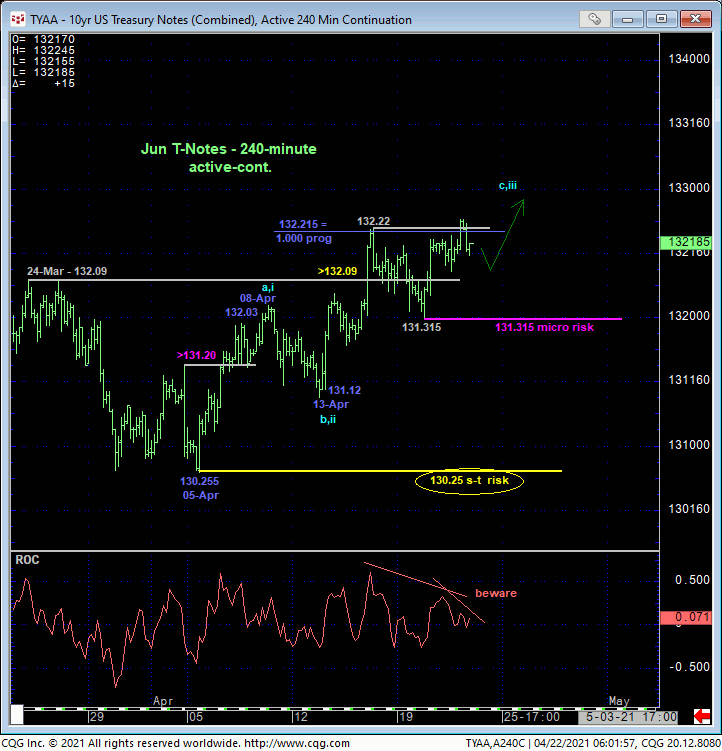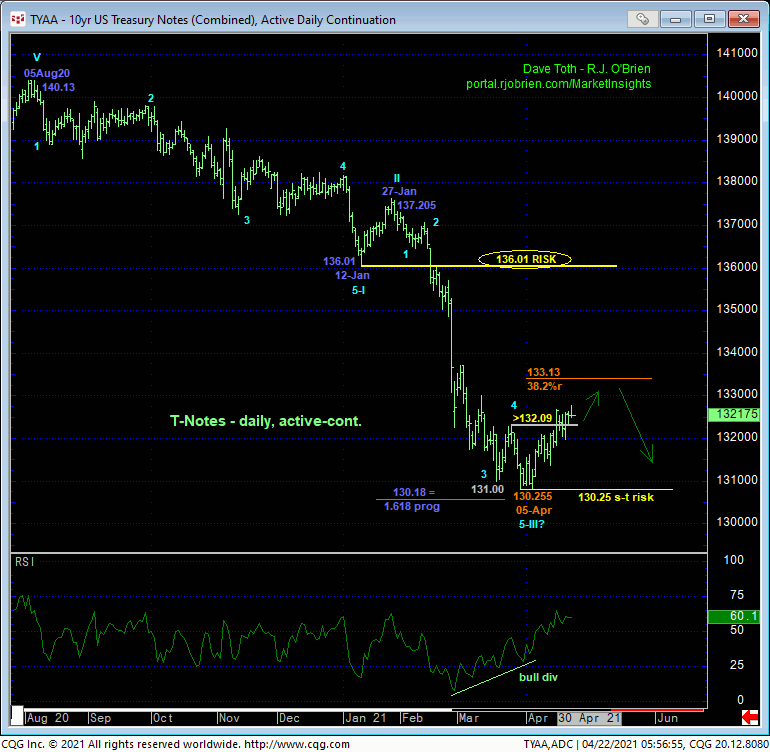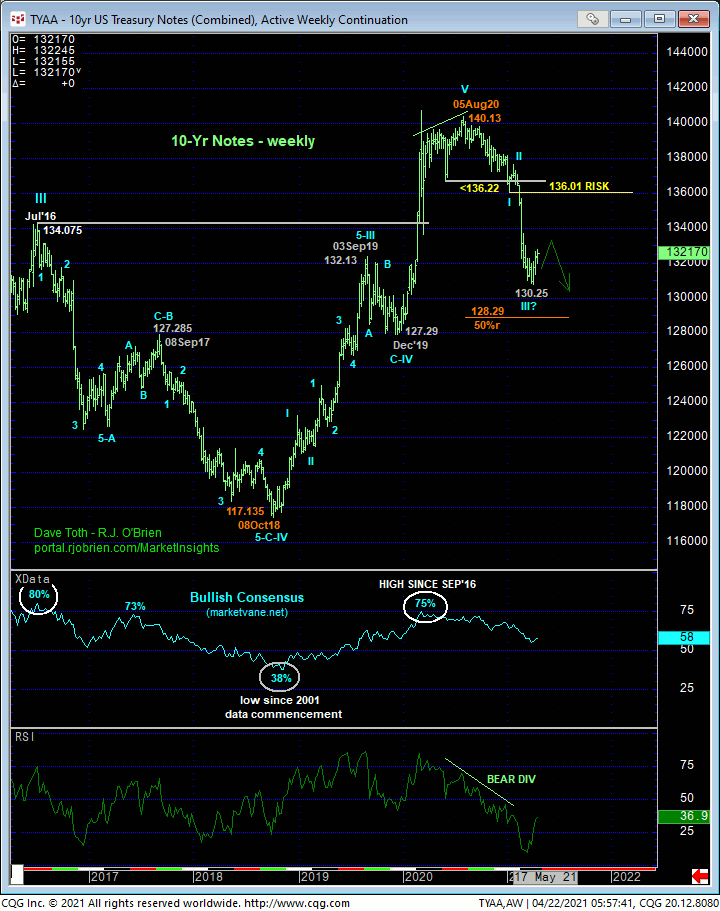
Overnight’s poke above last week’s 132.22 high reaffirms the intermediate-term trend as up and leaves Tue’s 131.315 low in its wake as the latest smaller-degree corrective low the market is now minimally required to fail below to confirm a bearish divergence in short-term momentum, stem the recovery and define the end or upper boundary of what we strongly suspect is a mere correction within the new secular bear market. Per such, this 131.315 low may be used as a micro risk parameter from which shorter-term traders with tighter risk profiles can objectively rebase and manage the risk of non-bearish decisions like short-covers and cautious bullish punts.
The 240-min chart below also shows the current 132.215-area as the 1.000 progression of early-Apr’s initial 130.255 – 132.03 (prospective a-Wave) recovery taken from 13-Apr’s 131.12 (prospective b-Wave) low in what would be a rather typical 3-wave correction. This merely “derived” Fibonacci progression relationships means absolutely nothing until and unless corroborated by an accompanying confirmed bearish divergence in momentum needed to, in fact, stem the clear and present intermediate-term uptrend. Herein lies the importance of even an admittedly tight risk parameter at 131.315.
Needless to say and even if the market fails below 131.315, 05-Apr’s 130.255 low and support still looms as THE short-term but key risk parameter the market needs to break to reinstate the secular bear trend. Until such sub-130.255 weakness is proven, the market could languish laterally in a consolidation stint between whatever high is rejected and that 130.255 low for weeks.


On a broader scale, it’s clear that this month’s recovery attempt pales in comparison to the 8-month downtrend, Jan-Apr’s steep, accelerated portion of which has “3rd-wave” written all over it. Against this broader bearish backdrop, it would be premature to approach this month’s recovery as anything more than an interim corrective hiccup within the major bear trend. At this point and without considerably “more” basing behavior that might then warn of a broader reversal higher, commensurately larger-degree strength above 12-Jan’s suspected 1st-Wave low at 136.01 is required to jeopardize the impulsive integrity of a bear market that we believe could be generational in scope, reversing the 39-YEAR bull market from 1981 to last year’s 140.13 high. Per such, this 136.01 level remains intact as our key long-term risk parameter from which longer-term institutional players can objectively base and manage the risk of a still-advised bearish policy and exposure.
We will, of course, be watchful for any bearish divergence in shorter-term momentum needed to arrest this month’s recovery and reject/define a more reliable high and resistance from which the risk of a resumed bearish policy by shorter-term traders can be objectively based and managed. A relapse below 131.315 would be such a mo failure.
In sum, a bearish policy remains advised for longer-term players with a recovery above 136.01 required to negate this call and warrant its cover. A cautious bullish policy remains OK for shorter-term traders with a failure below 131.315 required to threaten this call enough to warrant its immediate cover and reversal into a cautious bearish policy with a recovery above whatever high is left in the wake of such a setback needed to negate that call and warrant its cover. In lieu of such sub-131.315 weakness, further lateral-to-higher prices should not surprise.


